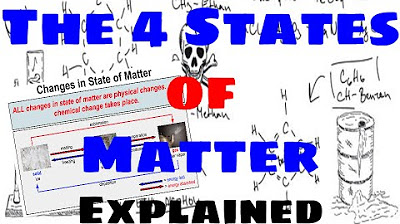Fight or Flight Response
Summary
TLDRIn this educational video, Mr. Andersen explores the fight or flight response, explaining that the immediate reaction to danger is not due to adrenaline but rather the nervous system and muscles. He clarifies that adrenaline, or epinephrine, kicks in later, affecting various body systems by binding to cell surface proteins. This chemical messenger increases heart rate, breathing, and blood flow to muscles while slowing digestion, preparing the body to confront threats.
Takeaways
- 🚑 The fight or flight response is a physiological reaction that prepares the body to either confront or escape from a perceived threat.
- 🏃♂️ The immediate action of jumping out of the way of a car is not due to adrenaline but rather the rapid response of the nervous system and muscles.
- 🧠 The hypothalamus in the brain plays a central role in initiating the fight or flight response by sending signals throughout the body.
- 🫀 Adrenaline, also known as epinephrine, is released by the adrenal medulla in response to a threat and is a key chemical in the fight or flight response.
- 🔁 Epinephrine triggers a signal transduction pathway that converts glycogen to glucose in the liver, providing a quick energy source for the body.
- 💓 Epinephrine increases the heart rate by binding to proteins on the surface of heart cells and triggering a specific response within them.
- 🏋️♀️ The hormone causes vasodilation in muscles, increasing blood flow to these areas to enhance strength and readiness for action.
- 🔐 Epinephrine slows down the digestive system by vasoconstricting blood vessels, redirecting energy away from digestion during a threat.
- 👀 Other effects of epinephrine include faster breathing rates and dilated pupils, which are part of the body's overall response to prepare for action.
- 🔄 The fight or flight response illustrates how a single chemical signal can have varied effects on different cells and systems within the body.
Q & A
What is the fight or flight reaction?
-The fight or flight reaction is a physiological response that occurs in response to a perceived harmful event, attack, or threat to survival. It is a part of the acute stress response and is also known as the 'acute stress reaction'.
How quickly does adrenaline respond in the fight or flight reaction?
-Adrenaline does not respond as quickly as the initial physical reaction to a threat. The immediate response to getting out of the way of a car, for example, is due to the nervous system and muscles, not adrenaline.
What role does the nervous system play in the immediate response to a threat?
-The nervous system processes the threat, sends signals to the muscles, and uses ATP to enable quick physical reactions, such as jumping out of the way of a car, without the involvement of adrenaline.
What is the primary function of epinephrine in the body during the fight or flight response?
-Epinephrine, also known as adrenaline, is released during the fight or flight response to increase heart rate, dilate pupils, and mobilize glucose for energy. It prepares the body to either confront the threat or flee from it.
Where is the hypothalamus located and what is its role in the fight or flight response?
-The hypothalamus is located near the center of the brain. It sends signals that initiate the fight or flight response by triggering the release of adrenaline from the adrenal medulla.
How does epinephrine affect the liver during the fight or flight response?
-Epinephrine triggers a signal transduction pathway in the liver that converts glycogen into glucose, providing the body with an immediate energy source.
What is the effect of epinephrine on the heart and lungs during the fight or flight response?
-Epinephrine increases the heart rate and breathing rate by triggering signal transduction pathways in the heart and lung cells, preparing the body for rapid action.
How does the digestive system respond to the presence of epinephrine during the fight or flight response?
-Epinephrine causes vasoconstriction in the digestive system, slowing down digestion and redirecting blood flow away from the digestive organs to prioritize the body's response to the threat.
What is the purpose of the different responses to epinephrine in various parts of the body?
-The different responses to epinephrine throughout the body are designed to ensure that the body can effectively deal with a threat. This includes increasing energy supply, enhancing sensory perception, and preparing the body for physical exertion.
Why does the body not need to focus on digestion during a fight or flight response?
-During a fight or flight response, the body prioritizes immediate survival by redirecting resources away from non-essential processes like digestion, which is not critical for immediate survival.
How does the body's response to epinephrine contribute to the feeling of a 'rush' after a near-accident or a perceived threat?
-The 'rush' feeling is a result of the body's release of epinephrine, which increases heart rate, breathing, and energy supply, preparing the body for a quick response to danger.
Outlines

This section is available to paid users only. Please upgrade to access this part.
Upgrade NowMindmap

This section is available to paid users only. Please upgrade to access this part.
Upgrade NowKeywords

This section is available to paid users only. Please upgrade to access this part.
Upgrade NowHighlights

This section is available to paid users only. Please upgrade to access this part.
Upgrade NowTranscripts

This section is available to paid users only. Please upgrade to access this part.
Upgrade NowBrowse More Related Video

The Four States of Matter - Explained

Lab Equipment - Explained

3. Gr 11 Life Sciences - Population Ecology - Theory 3 Mark Recapture Method

4. Gr 11 Life Sciences - Population Ecology - Worksheet 1

PENJASKES KELAS X - SOFTBALL

Introduction to Culture [AP Human Geography Review Unit 3 Topic 1]

Menentukan Mr ( massa molekul relatif )
5.0 / 5 (0 votes)